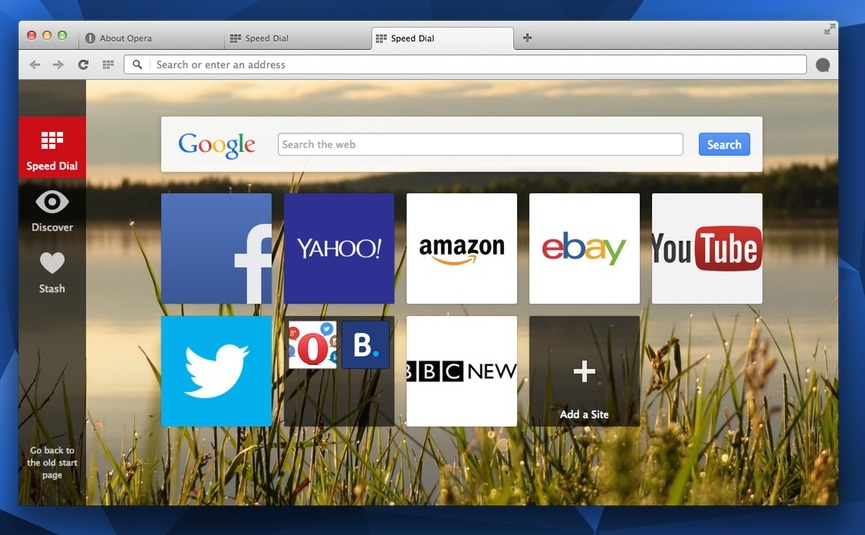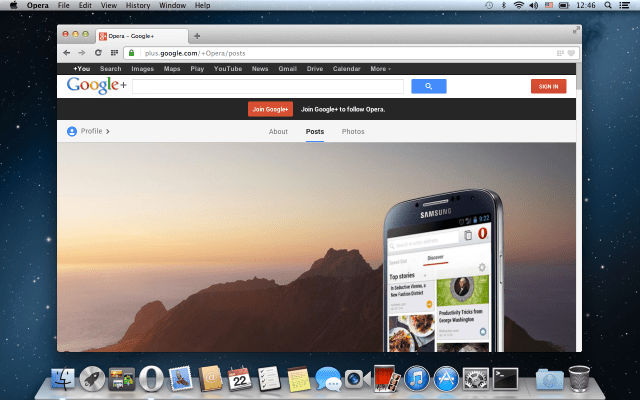

- #Opera web browser for mac download#
- #Opera web browser for mac mac#
- #Opera web browser for mac windows#
The extensions that are currently loaded in Chrome will be displayed.
#Opera web browser for mac windows#
Click the uninstall button and follow the instructions.Ĭhrome: Open Chrome, then select Extensions from the Windows menu. A description of the extension will be displayed in the right-hand pane, along with an Uninstall button. To uninstall a Safari extension, select the extension you wish to remove in the sidebar. Remove the checkmark from any extensions you wish to disable but keep installed for easy access later. A checkbox with a check in it is enabled, and those without a check are disabled. Select the Extensions tab the installed extensions will be displayed in the sidebar. Launch Safari and open Preferences, available under the Safari menu. Both are available from the Safari Preferences.

Safari: Safari provides two places to control add-ons, one for extensions and one for plug-ins. It’s best to only have the add-ons that you actually use installed or enabled, and to disable or remove the rest. While these additions can be quite helpful, installing too many of them can lead to browser bloat, requiring either a larger memory footprint or an increase in CPU usage when using the browser.

Uninstall or Disable Plug-ins and Extensions You Don’t Need: Browsers allow third-party developers to add features in the form of plug-ins and extensions.

(Firefox allows you to select a time range for the data that will be removed.) You can select additional items to be cleared, but these are the two we’re interested in.
#Opera web browser for mac download#
In the list of items that can be cleared, place a checkmark in the Browsing & Download History checkbox, as well as the Cache checkbox. In the Clear Recent History window, click the Details chevron. Once you’ve made your selection, click the Clear Browsing Data button.įirefox: Launch Firefox, then from the History menu select Clear Recent History. You can select other items to remove, but these two are the ones we’re interested in. In the Clear Browsing Data window, make sure the following are checked: Browsing history, and Cache images and files. (Chrome and Opera both include the option to clear the browser cache in their menus.)Ĭhrome and Opera: Open the browser, and then select Clear Browsing Data from the Chrome or Opera menu. Once the Develop menu item is added to the menu bar, you’ll find an Empty Caches item in the menu. Click the Advanced tab, and place a checkmark in the “Show Develop menu in menu bar” box. Open Safari, and then select Preferences from the Safari menu. Safari: An easy way to clear the Safari cache is to enable the Developer menu and use its Empty Caches command. (Safari’s optional Develop menu brings many additional features to the browser, including an easy way to empty its cache.) Clearing the cache and history files every now and then is a good idea for general browser health and performance. But occasionally, this data can become out of date or corrupt and can slow the browser down. We’re going to start by looking at customization tweaks for increasing performance that are common to all four browsers then we’ll look at a few tricks for specific browsers.Ĭlear History and Cache files regularly: This may seem counterintuitive after all, the browser’s cache files are designed to increase rendering performance by not requiring it to download page data it already has.
#Opera web browser for mac mac#
If these four browsers sound familiar, it may be because we recently put them to the test to see how well they perform under pressure in our Rocket Yard Testing Lab: Battle of the Mac Browsers guide. We’re going to look at techniques for getting the most out of four popular Mac browsers: Safari, Google Chrome, Opera, and Firefox. Many times optimization can take the form of making a task easier to perform or making your browser work better with sites you routinely visit. It can also be different for everyone since we all use our browsers slightly differently, and it’s not always about speed. There are many ways to optimize your browser, including trying to maximize speed, improve general performance, or get the best search results the list goes on. That’s why the browser is a good candidate for optimizing how it works to better meet your needs. But it’s no doubt the web browser that sees more interaction with me browsing sites, researching projects, getting tips on solving problems, or watching videos and playing games. Both are always running whenever my Mac is on. I’m pretty sure my web browser ( Safari) is the most often used app on my Mac, though it could also be my mail client (Apple Mail).


 0 kommentar(er)
0 kommentar(er)
